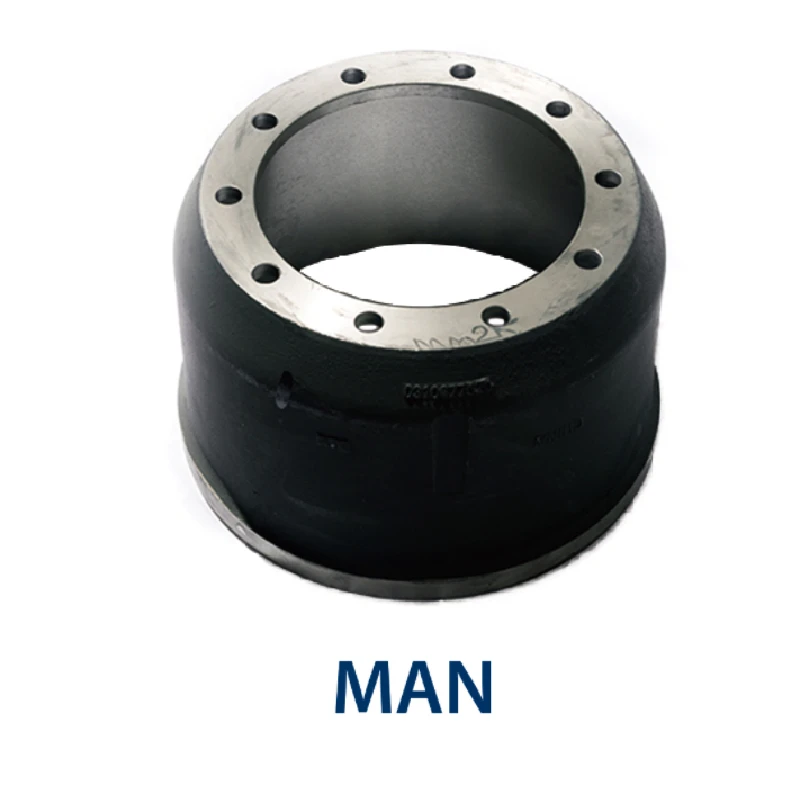Nov . 07, 2024 17:46 Back to list
When should you consider replacing your vehicle's brake drums for optimal safety?
How Often to Replace Brake Drums
Brake drums are an essential component of a vehicle's braking system, particularly in older cars and trucks. Understanding how often to replace brake drums can enhance safety and maintain the vehicle's performance. This article explores the significance of brake drums, signs indicating they need replacement, and recommended maintenance practices.
Understanding Brake Drums
Brake drums are part of the drum brake system, which utilizes friction to slow down or stop a vehicle. When the driver presses the brake pedal, brake shoes inside the drum expand against its inner surface, creating friction that slows the wheel. While disc brakes are more common in modern vehicles, drum brakes are still prevalent, especially in rear-wheel brake systems.
Signs of Worn Brake Drums
Knowing when to replace brake drums is crucial for vehicle safety. Here are some primary indicators of wear
1. Unusual Noises If you hear grinding, squeaking, or rattling noises when braking, it could mean that the brake shoes or drums are worn down. These sounds often indicate that the brake shoes are making contact with the drum or that the components are failing.
2. Vibration or Pulsation If you feel a vibration or pulsation in the brake pedal when braking, it may indicate that the brake drums are warped or unevenly worn. This issue can lead to reduced braking efficiency and may require immediate inspection and replacement.
3. Longer Stopping Distances If your vehicle takes longer to stop than it used to, it may be a sign that the brake components, including the drums, are worn. Faulty brake performance is not only dangerous but can also lead to more severe brake system failures.
4. Cracks or Visual Damage Regular inspections are essential to identify any visible cracks or chips in the brake drums. If you notice any physical damage, it's crucial to have them replaced promptly.
Recommended Replacement Schedule
Brake drums do not have a fixed replacement interval, as their lifespan can vary based on several factors, including
how often to replace brake drums

- Driving Habits Frequent braking, stop-and-go traffic, and aggressive driving can wear down brake drums quicker than gentle driving
.- Type of Vehicle Heavier vehicles, such as trucks and SUVs, may experience more stress on their braking systems, leading to earlier drum wear.
- Material Quality The material and quality of brake drums can affect their longevity. Higher-quality components might resist wear longer than cheaper alternatives.
Generally, it is advisable to have your brake system, including drums, inspected regularly—approximately every 20,000 to 30,000 miles or at each regular vehicle service. However, it's essential to consult your vehicle manufacturer’s recommendations, as they can vary by make and model.
Maintenance Tips to Extend Drum Life
To maximize the lifespan of your brake drums, consider the following maintenance tips
1. Routine Inspections Regular brake system checks, including examining drum condition and brake shoe wear, should become part of your vehicle's routine maintenance.
2. Brake Pad Replacement Always replace brake pads in conjunction with brake drums to maintain balanced braking performance.
3. Proper Driving Techniques Practice smooth braking to minimize wear on the braking system and, ultimately, the drums.
4. Seek Professional Help At the first sign of braking issues, consult a professional mechanic to diagnose and resolve the problem before it worsens.
Conclusion
Understanding the importance of brake drums and recognizing the signs of wear can help ensure your vehicle’s safety on the road. By adhering to a proper maintenance schedule and adopting safe driving practices, you can prolong the life of your brake drums, ensuring your vehicle remains both reliable and safe for you and your passengers.
-
Premium Brake Drum Iveco – Durable Drum Brake Drum & Brake Shoe Solutions
NewsJul.08,2025
-
High-Performance Brake Drum Liza for Enhanced Safety Reliable Drum Brake Drum & Brake Shoe Solutions
NewsJul.08,2025
-
High-Quality Brake Drum MAZ – Durable Drum Brake Drum & Brake Drum and Brake Shoe for Optimal Performance
NewsJul.07,2025
-
High-Quality Brake Drum Kamaz for Reliable Performance Durable Drum Brake Drum & Brake Shoes
NewsJul.07,2025
-
High-Quality Brake Drum Kamaz for Reliable Performance Durable Drum Brake Drum & Brake Shoe Replacement
NewsJul.07,2025
-
Brake Drum Man - High-Quality Drum Brake Drum & Brake Drum and Brake Shoe Solutions
NewsJul.06,2025
